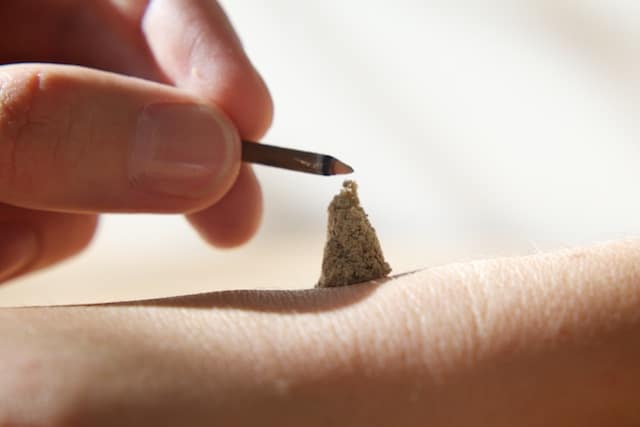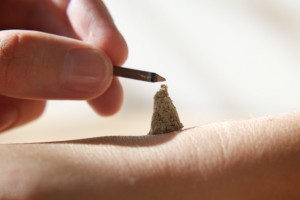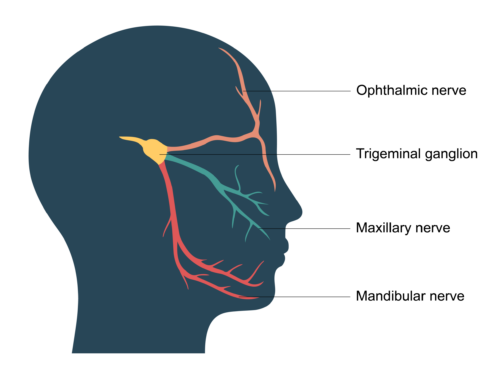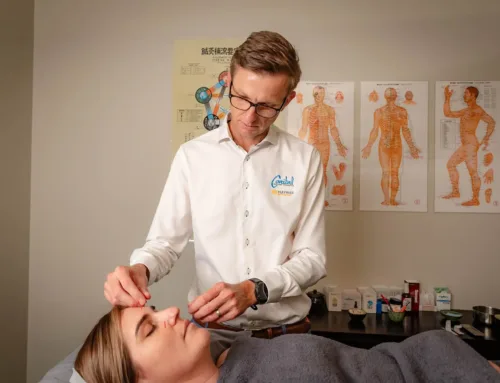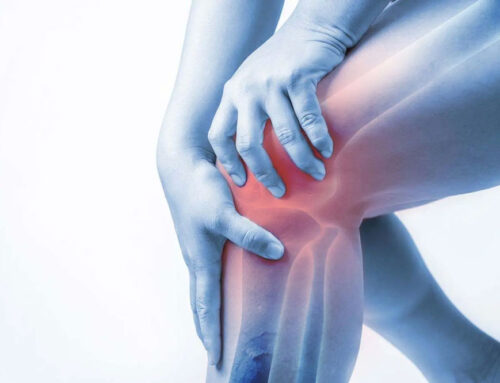Moxa is an important tool in Traditional Chinese medicine used for thousands of years. Ancient hieroglyphs that date back to more than 3,000 years ago, during the Shang Dynasty in China, have been found to depict acupuncture and moxibustion treatments.
What is Moxa?
Moxa is a small and spongy plant, also called Mugwort in English and Artemesia Vulgaris in Latin. Therapists use moxa, a dried herb, to warm specific body areas, focusing primarily on pressure points. The purpose of moxa treatment is to stimulate circulation through the points and encourage a better flow qi, or energy through the body’s meridians, by combating cold and dampness.
Moxa can be used in various ways, both internally and externally. The herb is sometimes prescribed to be taken as a tea or tincture. When burned, dry moxa gives off a steady heat that can be used in conjunction with acupuncture to treat specific illnesses. This combination of treatments is called zhenjiu in Mandarin.
Moxa-burning, or moxibustion, can be performed using two main methods. Using direct moxibustion, a small cone of moxa is placed on the skin’s surface. The moxa is ignited and allowed to smoulder throughout the treatment.
Indirect moxibustion includes a thin disc of another herb, sometimes garlic or ginger that is placed between the moxa and the skin. This helps to moderate the amount of heat that enters the skin and involves the added benefit of a second herbal vapour to the treatment.
Another method is to use a cigar-shaped moxa stick that is held close to the skin. In case of smoke sensitivity, smokeless treatments are possible using a smouldering charcoal rod impregnated with moxa instead of just the herb alone. Indirect moxa burning avoids any risk of skin blistering and allows a larger area of the body to be warmed at the same time.
How does moxibustion feel?
Most clients describe the feeling of the treatment as a calm, warming sensation that helps them to feel comfortable and relaxed. Moxa encourages deep breathing and improved circulation, which helps to ease deep muscle tension.
How does it work?
An active ingredient in moxa is borneol, a substance that is known for its analgesic and antiseptic properties. Borneol is often included in topical remedies to reduce pain and inflammation. Moxa is especially helpful in treating conditions including:
- Muscle tension
- Chronic pain
- Arthritis
- Carpel tunnel syndrome and Repetitive strain injuries
Moxa for Women’s Health:
Moxa has also been shown to be an effective emmenagogue, which means that it helps to stimulate blood flow to the pelvic area and uterus and regulate menstruation. The benefits of moxa treatments for women include:
- Decreased menstrual cramps
- Reduced risk of pelvic inflammatory disease
- Improved fertility
- Inducing labour and decreasing the length and intensity of contractions
Moxa is also widely recognized for its ability to encourage fetal movement. This effect is highly desirable during pregnancies where the baby is in the breech or feet-down position. A skilled therapist can use moxa treatment in conjunction with acupuncture to encourage the baby to change to the normal head-down position for a safer delivery.
A recent study in the Journal of the American Medical Association showed that 75% of pregnant women with breech babies turned to the normal position following moxa therapy.

